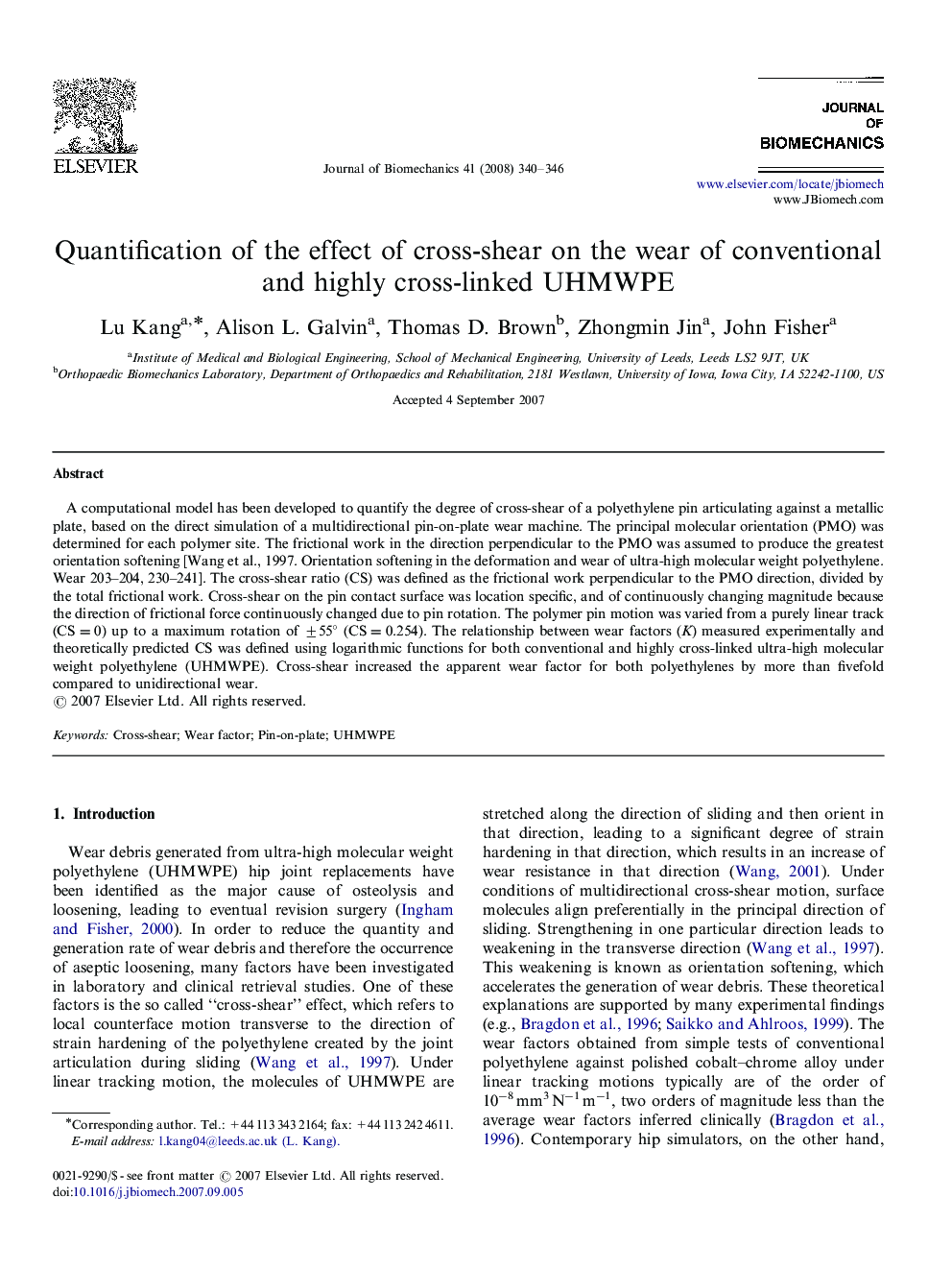| Article ID | Journal | Published Year | Pages | File Type |
|---|---|---|---|---|
| 873995 | Journal of Biomechanics | 2008 | 7 Pages |
A computational model has been developed to quantify the degree of cross-shear of a polyethylene pin articulating against a metallic plate, based on the direct simulation of a multidirectional pin-on-plate wear machine. The principal molecular orientation (PMO) was determined for each polymer site. The frictional work in the direction perpendicular to the PMO was assumed to produce the greatest orientation softening [Wang et al., 1997. Orientation softening in the deformation and wear of ultra-high molecular weight polyethylene. Wear 203–204, 230–241]. The cross-shear ratio (CS) was defined as the frictional work perpendicular to the PMO direction, divided by the total frictional work. Cross-shear on the pin contact surface was location specific, and of continuously changing magnitude because the direction of frictional force continuously changed due to pin rotation. The polymer pin motion was varied from a purely linear track (CS=0) up to a maximum rotation of ±55° (CS=0.254). The relationship between wear factors (K) measured experimentally and theoretically predicted CS was defined using logarithmic functions for both conventional and highly cross-linked ultra-high molecular weight polyethylene (UHMWPE). Cross-shear increased the apparent wear factor for both polyethylenes by more than fivefold compared to unidirectional wear.
